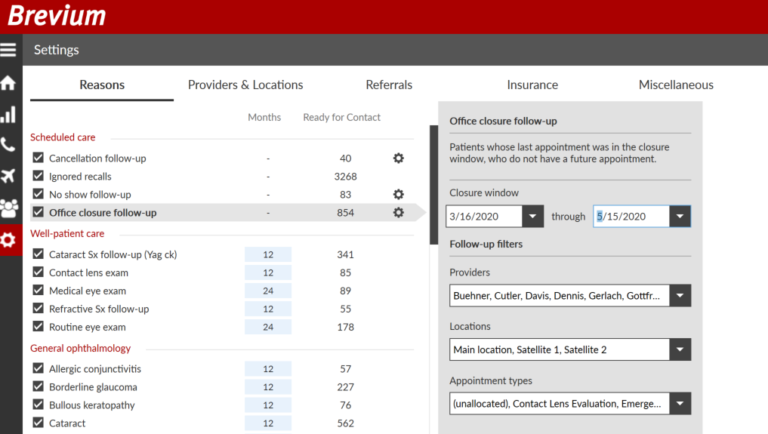The Brevium Blog

How Reactivated Patients Add More Value than Active Patients
Reactivated patients add more profits to your practice than currently active patients, because they provide revenue after your fixed costs have been covered. When you calculate the value of adding just one more patient to your medical scheduling, you might figure your total expenses over the past year divided by your total number of patients. This would return your expenses per patient. Then you might subtract this number from the total revenue an additional patient would pay for services to arrive at the value of that additional patient. Here is an example, using simplified numbers for clarity: If a practice has 2,500 patients who each visit twice per year, $750,000 [1] in collections, or $300 per patient, and $412,500 in expenses, or $165 per patient, the practice on average collects $135 in profits per patient per year. By this method, one additional patient would logically add $135 in profits to the practice. But this would not be correct.
The Correct Way to Calculate Expenses versus Collections
Your practice has two types of expenses: Fixed and variable. Fixed expenses include rent, staff salaries, utilities and so on. Variable costs include clinical consumables, production bonuses, additional staff and so on. Most medical practices have high fixed expenses and low variable expenses. If your practice is profitable, your current fixed expenses are being covered by your current patients. Here is the bonus: Any additional patients add collectibles after you have met your fixed expenses. If fixed expenses account for 70 percent of total expenses [2], each additional patient in the example above comes with only $49.50 in variable expenses, resulting in a $250.50 profit rather than $135.
Reactivated Patients Add the Most Profit with the Least Expense
You might ask, What about the cost of acquiring that new patient? New-patient acquisition is expensive when you consider advertising, free first-time visits and other enticements. But you already have a rich source of patients for whom you have already invested the acquisition costs. You likely have a database with up to 2,000 inactive patients per provider whom you have treated in the past but who are overdue for treatment and have stopped responding to patient recall messages. Although your office has given up on these patients, you can reactivate many of them using low-cost phone calls, emails, texts and postcards if you apply best-practices communications strategies. Reactivating just 20 percent of these patients could become $100,000 in additional profits per provider per year, and much more over the lifetime of the patient relationship. Reactivated patients thus add revenue to your practice without the cost of acquiring new patients and after you have met your fixed expenses. They are reasonably your most valuable source for increasing revenue.
Brevium is the pioneer in patient reactivation. Brevium’s software mines its clients’ patient databases using customized algorithms to improve the patient appointment lifecycle™. Hundreds of practices have found Brevium to be a trusted partner, with personalized training and unlimited support. Through original research and software development, Brevium helps ensure that patients return for the care they need, and practices derive the greatest financial benefit from the patient appointment lifecycle™.














